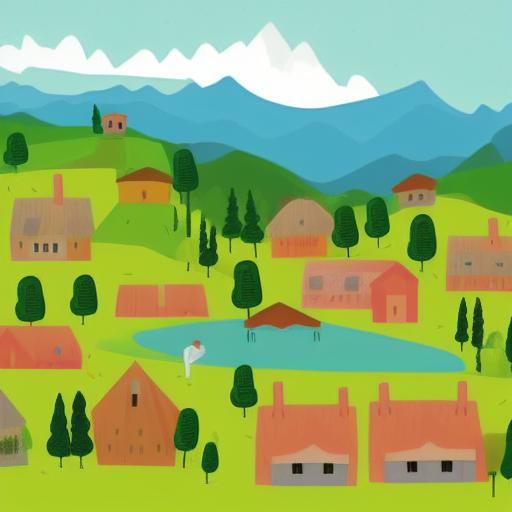What is Flat illustration?
Flat illustration is a style of illustration that uses simple shapes, colors, and minimal details to create a two-dimensional image. It is often used in graphic design, web design, and children’s book illustrations. The main characteristic of flat illustration is its simplicity, which allows for easy comprehension and recognition of the subject matter. The use of basic shapes and flat colors also gives the illustration a modern and minimalist feel.
One of the advantages of flat illustration is its versatility. It can be easily adapted to different design contexts, from corporate branding to mobile app interfaces. It is also well-suited for responsive design, as its simple shapes and lack of complex textures make it easy to scale up or down without losing clarity or resolution.
Characteristics of flat illustration
Another characteristic of flat illustration is its use of bright and bold colors. This is often seen in branding and advertising, where the use of vibrant colors can attract attention and create a sense of energy and excitement. Flat illustration can also incorporate gradients and shading to create depth and dimensionality, while still maintaining a simple and clean overall look.
Overall, flat illustration is a popular and effective style of illustration that has become increasingly prevalent in modern design. Its simplicity and versatility make it a great choice for a wide range of design contexts, while its bright colors and clean lines make it visually appealing and engaging.
What is AI-generated art?
AI-generated art can help designers create designs more quickly and efficiently while also allowing for more customization and creativity. By using this technology, designers can experiment with different styles of art and create visuals that they may not have been able to achieve otherwise. This can lead to more inclusivity and diversity in the art industry as well. Additionally, there are tools available like Visual Paradigm Online that make it easier to incorporate AI-generated art into designs.
How to write AI image prompt?
First, let’s look at the overall structure of the prompt. It begins with a description of the desired image – an illustration of a village with mountains and houses. This sets the tone and subject matter for the image that the AI will generate. Next, the prompt includes information about the artist who created the original vector art – Jessie Algie. This may influence the style or approach that the AI takes when generating the image.
The prompt also mentions that the vector art was a contest winner on Shutterstock. This suggests that the style and subject matter of the original image were popular or well-received by audiences, which may encourage the AI to generate a similar style or subject matter.
The next part of the prompt describes the style of the vector art as “naive art” and “flat illustration”. This gives the AI more specific instructions on the type of style to aim for in the generated image. Naive art typically involves simple, childlike depictions of the world, while flat illustration refers to a two-dimensional, graphic style with simplified shapes and bold colors.
Finally, the prompt specifies that the image should be a landscape illustration of a countryside city scene. This further narrows down the subject matter and style of the image, and may influence the AI to include specific elements such as houses, mountains, and perhaps even people or animals.
Overall, each part of the AI image prompt contributes to the overall direction and guidance given to the AI for generating the desired image. By providing specific details on subject matter, style, and even the original artist and contest results, designers can help ensure that the generated image meets their specific needs and preferences.


